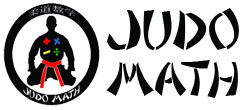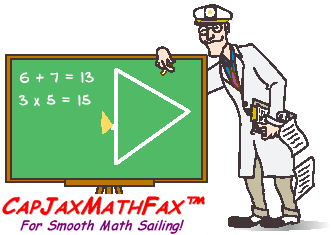Frequently Asked Questions
What is the difference between a Discipline and a Belt Level?
The Discipline is the unit of study for a particular math curriculum. The Belt Level refers to the topics that make up the Discipline. For example, a Discipline might be graphing with belt/topic areas of slope, graphing linear equations, graphing inequalities and systems. The Discipline composes the belt topics.
What is an advancement?
An Advancement is a test which measures mastery at the end of a belt/topic level. Typically, advancements are limited to a 10 question test and require a passing mastery of an 80% or higher. We raise the bar of mastery to 80% as opposed to 70% to ensure a greater understanding and showcase of skills.
Where does the advancement come from?
Oftentimes, the teacher creates a ten problem test with multiple variations to account for students needing to retake advancements. Many textbooks have multiple test versions and if necessary, a teacher can modify existing tests to create different versions. Some teachers have even used online assessment platforms to use as their advancements. At the end of a Discipline, it is good to give a cumulative or unit test that measures all the topic areas in the Discipline. The cumulative advancement may be more than 10 questions but no more than 20 questions.
What happens when a student fails an advancement?
This happens often and signals to both student and teacher the need for more practice and reteaching- “More Training, Grasshopper!” The first and best course of action is to have students complete test/advancement corrections so that they can learn exactly what their mistakes were. Students must then go back and review material and are often instructed to complete and rework problems to retrain and practice the skill.
What is the role of the sensei belt?
The Sensei Belt is an optional belt for students and serves to meet your faster paced students. These students are often self-starters and are able to work/learn independently. They can be given a mini-lesson and are able to understand concepts quickly. Moreover, the Sensei belt requires students to work and mentor with other students to teach and help others master belt topics. The Sensei belt is a strong motivator and a strong facet of differentiating instruction for all students.
What happens to the student who is the last to earn a belt in a discipline?
Contrary to what you might think, a student who is struggling is greatly motivated and impacted by the public representation of their progress on the progress tracker. They work harder and pair up with other students to advance to the next belt. It is also helpful to you as the teacher, to specifically identify their struggles and pinpoint their areas of misunderstanding.
The teacher is in control of when students pass belt tests. You can make modifications to challenge faster students and to assist slower students. After every discipline there is a final exam. That is the real assessment. The belt tests are like quizzes, used to train kids how to study. So it’s important to help the slower kids gain confidence. Give oral tests or informal tests and help those kids move along. The more confident a student is, the more willing they are to learn more. You want them to believe in themselves. Once they do, they learn a lot more.
How do you teach to several different belt levels/groups at the same time?
This is the beauty of Judo Math! Commonly referred to as pacing or pacing groups, the teacher has the opportunity to work with small groups. Research has shown that small group instruction has greater benefits because you have their complete attention. Kids within a belt group identify with one another due to their pacing and are more willing and able to collaborate. They all have something to contribute, and since everyone becomes a black belt they don’t feel labeled. They’re empowered.
Armed with a small dry erase tablet, the teacher can float among the different belt levels offering mini-lessons or giving instruction of specfic problem areas. Teachers can also give special projects or math activities to a group to complete in order to enhance understanding. Teachers have greater flexibility and autonomy within a system. Indeed, it may seem a lot to manage but with some practice it changes the way teachers teach.
Can I buy just the curriculum?
Unfortunately, no. We believe it’s not what you teach, it’s HOW you teach it. While our curriculum does match up with our program and is aligned with the common core, Judo Math is much more about good teaching practices. So we sell the curriculum and the training together.
How much does the training cost?
That depends on many different factors. Is it a group of teachers or just yourself? Are we traveling to your school? Do you want an online training? An online course? Curriculum and support included? Materials? Each situation is personal so just contact us to let us know what you’re looking for.
Can I see a sample of your curriculum?
More questions? Please email Dan Thoene or Jamie Holmes.

 www.capjax.com
www.capjax.com